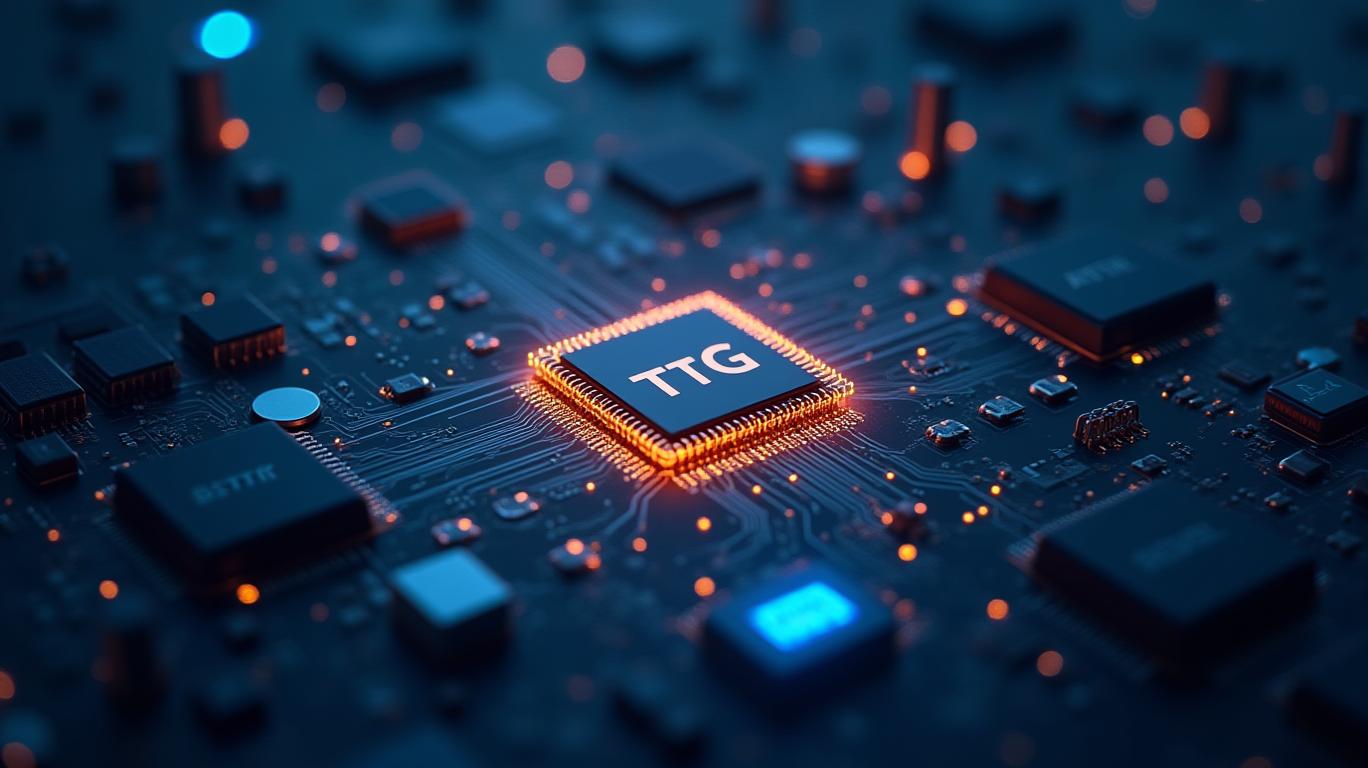Navigating the Semiconductor Boom: AI-Driven Opportunities and Risks for Investors
Thursday, May 1, 2025 9:45 pm ET
Introduction
The semiconductor industry is at the heart of modern technology, powering everything from smartphones to sophisticated AI systems. Recently, the integration of artificial intelligence (AI) has emerged as a transformative force within this sector. As an investor, understanding how AI-driven innovations are reshaping the semiconductor landscape is crucial for identifying potential growth opportunities and making informed decisions.
Core Concept Explanation
At its core, the semiconductor industry involves the design and manufacture of tiny electronic components called semiconductors or chips, which are essential for operating electronic devices. With the rise of AI, there is an increasing demand for more powerful and efficient chips that can handle complex computations at faster speeds. AI technologies require high-performance processing capabilities, leading to innovations in semiconductor design and production.
AI has introduced concepts such as machine learning, neural networks, and deep learning, which demand a new class of semiconductors capable of processing large data sets and executing complex algorithms. This shift is driving significant changes in how semiconductors are developed, leading to an explosion of innovation and investment possibilities.
Application and Strategies
Investors can leverage AI-driven advancements in the semiconductor industry in several ways:
Investing in Leading Chip Manufacturers: Companies like nvidia, amd, and intel are at the forefront of developing AI-optimized semiconductors. Investing in these firms can provide exposure to the AI boom.
Exploring Emerging Companies: Startups specializing in AI chip design, such as Graphcore and Cerebras Systems, offer unique opportunities for early-stage investment. These companies are pushing the boundaries of technology with innovative solutions.
Diversifying with Tech ETFs: Exchange-Traded Funds (ETFs) that focus on technology and semiconductors can offer diversified exposure to the sector, spreading risk across various companies.
Case Study Analysis
A notable example of AI's impact on the semiconductor industry is NVIDIA's rise to prominence. Originally known for graphics processing units (GPUs) used in gaming, NVIDIA has successfully pivoted to AI applications, becoming a leader in AI chip technology. Their GPUs are now widely used in training AI models, contributing to rapid growth in revenue and stock value. This transition showcases how AI can redefine a company's trajectory and create substantial investment opportunities.
Risks and Considerations
While the AI-driven semiconductor boom presents lucrative opportunities, it also comes with risks:
Market Volatility: The semiconductor industry is notoriously cyclical, with periods of high demand followed by oversupply. Investors should be prepared for potential volatility.
Technological Disruption: Rapid technological advancements can lead to obsolescence of current products. Staying informed about industry trends is essential.
Geopolitical Factors: The semiconductor sector is highly globalized, and geopolitical tensions can impact supply chains and market stability.
To mitigate these risks, investors should conduct thorough research, diversify their portfolios, and stay updated on industry developments.
Conclusion
AI is undeniably reshaping the semiconductor industry, offering exciting opportunities for investors. By understanding the interplay between AI and semiconductors, investors can position themselves to capitalize on this technological revolution. However, it is crucial to remain aware of the inherent risks and adopt a balanced investment strategy. With careful consideration and strategic planning, investors can navigate the semiconductor boom and potentially reap significant rewards.
The semiconductor industry is at the heart of modern technology, powering everything from smartphones to sophisticated AI systems. Recently, the integration of artificial intelligence (AI) has emerged as a transformative force within this sector. As an investor, understanding how AI-driven innovations are reshaping the semiconductor landscape is crucial for identifying potential growth opportunities and making informed decisions.
Core Concept Explanation
At its core, the semiconductor industry involves the design and manufacture of tiny electronic components called semiconductors or chips, which are essential for operating electronic devices. With the rise of AI, there is an increasing demand for more powerful and efficient chips that can handle complex computations at faster speeds. AI technologies require high-performance processing capabilities, leading to innovations in semiconductor design and production.
AI has introduced concepts such as machine learning, neural networks, and deep learning, which demand a new class of semiconductors capable of processing large data sets and executing complex algorithms. This shift is driving significant changes in how semiconductors are developed, leading to an explosion of innovation and investment possibilities.
Application and Strategies
Investors can leverage AI-driven advancements in the semiconductor industry in several ways:
Investing in Leading Chip Manufacturers: Companies like nvidia, amd, and intel are at the forefront of developing AI-optimized semiconductors. Investing in these firms can provide exposure to the AI boom.
Exploring Emerging Companies: Startups specializing in AI chip design, such as Graphcore and Cerebras Systems, offer unique opportunities for early-stage investment. These companies are pushing the boundaries of technology with innovative solutions.
Diversifying with Tech ETFs: Exchange-Traded Funds (ETFs) that focus on technology and semiconductors can offer diversified exposure to the sector, spreading risk across various companies.
Case Study Analysis
A notable example of AI's impact on the semiconductor industry is NVIDIA's rise to prominence. Originally known for graphics processing units (GPUs) used in gaming, NVIDIA has successfully pivoted to AI applications, becoming a leader in AI chip technology. Their GPUs are now widely used in training AI models, contributing to rapid growth in revenue and stock value. This transition showcases how AI can redefine a company's trajectory and create substantial investment opportunities.
Risks and Considerations
While the AI-driven semiconductor boom presents lucrative opportunities, it also comes with risks:
Market Volatility: The semiconductor industry is notoriously cyclical, with periods of high demand followed by oversupply. Investors should be prepared for potential volatility.
Technological Disruption: Rapid technological advancements can lead to obsolescence of current products. Staying informed about industry trends is essential.
Geopolitical Factors: The semiconductor sector is highly globalized, and geopolitical tensions can impact supply chains and market stability.
To mitigate these risks, investors should conduct thorough research, diversify their portfolios, and stay updated on industry developments.
Conclusion
AI is undeniably reshaping the semiconductor industry, offering exciting opportunities for investors. By understanding the interplay between AI and semiconductors, investors can position themselves to capitalize on this technological revolution. However, it is crucial to remain aware of the inherent risks and adopt a balanced investment strategy. With careful consideration and strategic planning, investors can navigate the semiconductor boom and potentially reap significant rewards.











